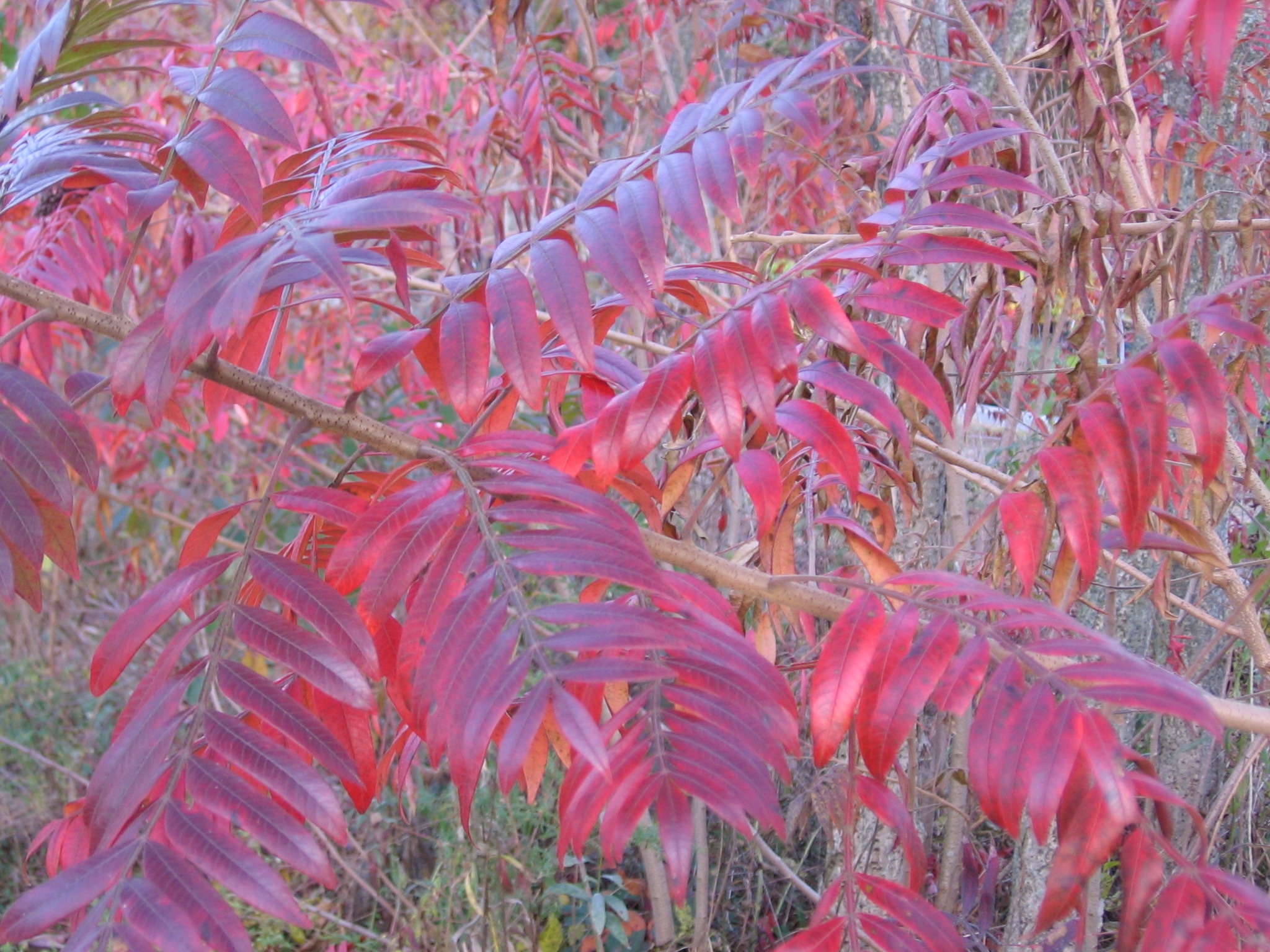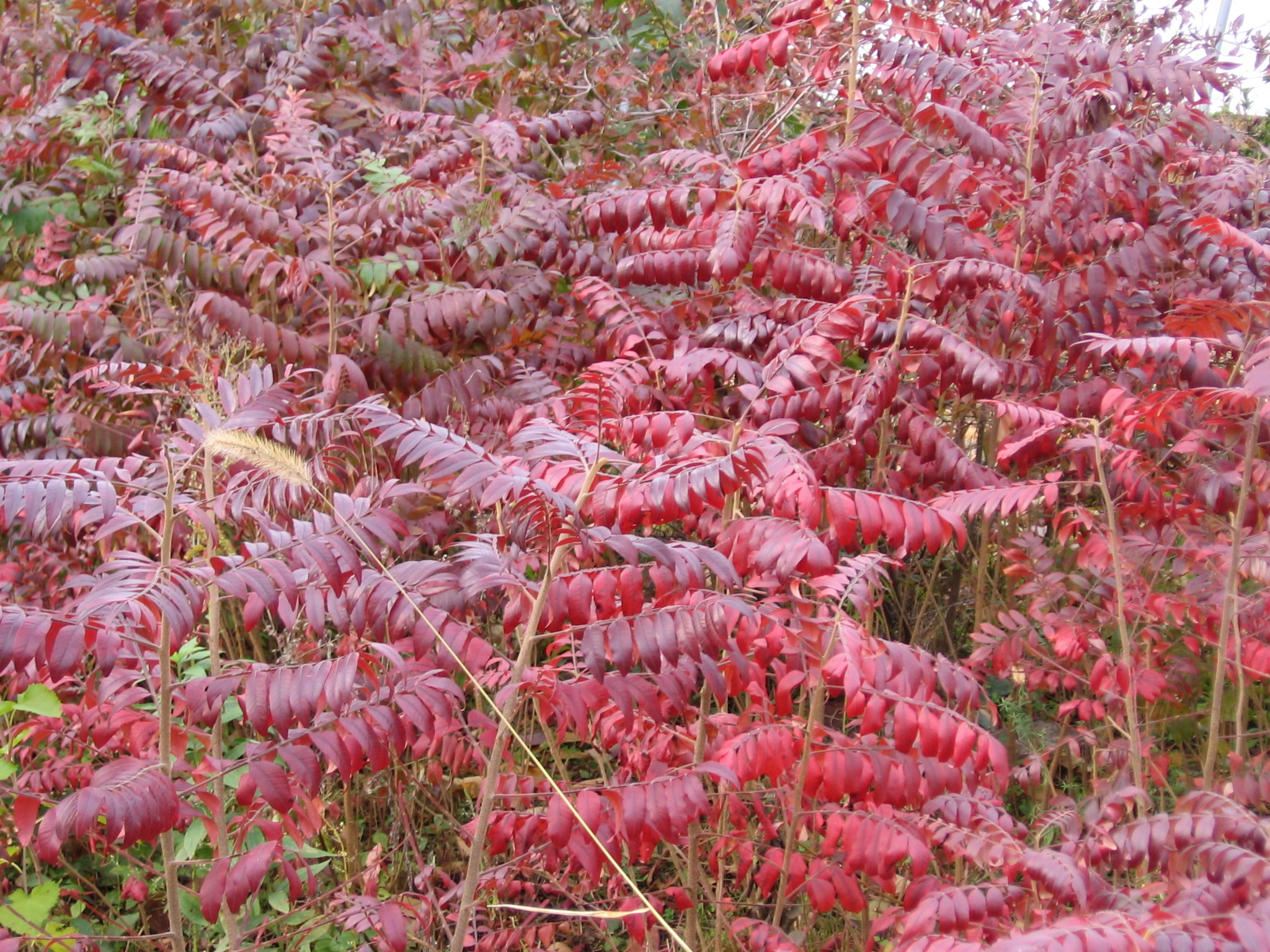Sumacs
Consummate invaders of poor, successional sites, the sumacs tend to make themselves at home in old fields, roadsides, and the "waste places" of your local flora. Given that these places alternately get overrun by invasive exotics for most of us, we probably ought to plant more sumacs. The sumacs are probably most appreciated for their vibrant fall colors, but they have many other worthy attributes. Plants come in male and female sexes, with yellow-green, summer-blooming flower clusters that bees flock to. Females develop showy reddish seed heads that often hold up through the winter. The drupes are eaten and dispersed by birds, but tend to be a food of "last resort" so we get to enjoy them longer. People also use the fruits to make a tangy pink "Indian lemonade."
Sumacs do tend to spread clonally, and tend to form patches that are wider than tall in sunny areas. Siting should be done with an eye to future growth, but spread is controlled by shade and competition from other plants. Alternately, a limited volume of soil can limit spread. Ascending the manmade but realistic "mountain" near the house of a long-term client, I wondered what native treasure awaited us at the rocky top. Arriving I found a stunning view across created lakes and hillsides, but what was the focal point at the summit? A single, rangy sumac. It was perfect.
Host of the red-banded hairstreak butterfly (Calycopus cercrops).
Rhus aromatica 'Gro Low' Fragrant Sumac
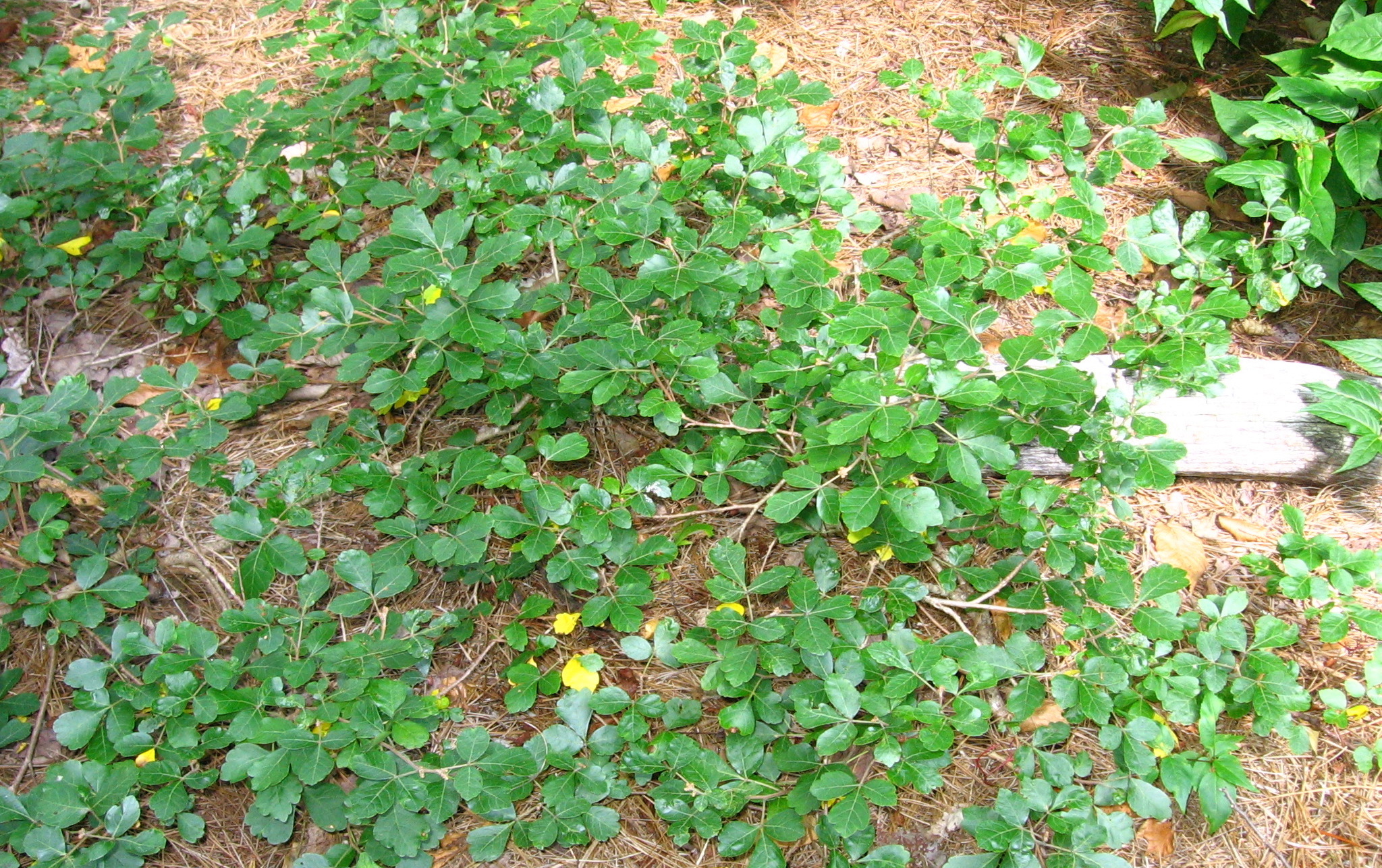
Back to top
Rhus copallinum (R. copallina) Shining Sumac
Also known as winged, dwarf, or flameleaf sumac, this plant has obviously caught many people's attention. Light yellow-green flower clusters attract the fevered attention of our bees in the summer. It is generally smaller than smooth and staghorn sumacs, with smaller, shiny, smooth-edged leaves and red-crimson-burgundy fall color. Fruit clusters mature to a deep reddish-purple. Ht. 5-15'+. Sun to woods' edge.
Back to top
Smooth Sumac, Rhus glabra
The smooth sumac is similar to the staghorn, but generally smaller, with smooth stems and brighter red berry clusters. Fall color tends to include orange, red, and burgundy shades. Ht. 8-15'. Sun to woods' edge.
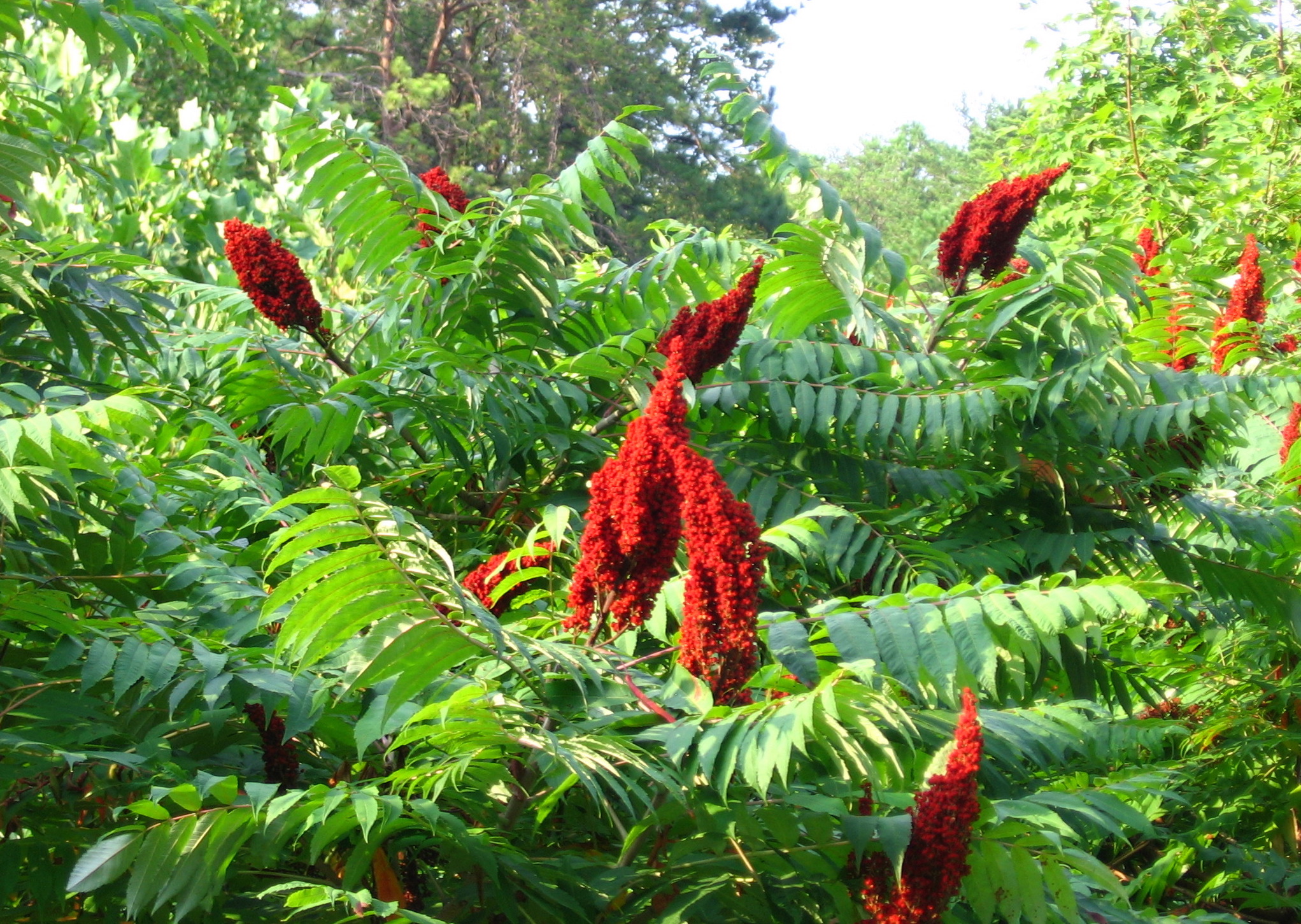
Back to top
Staghorn Sumac, Rhus typhina
Generally the largest of the sumacs, staghorn is named for the resemblance of its thick, hairy twigs to velvety young deer antlers. It's larger, drooping leaflets and coarser look are distinctive in all seasons. Fall color tends to be lighter than in the other species, with shades ranging from yellow to orange to red ranging across the leaflets as they turn. Hairy crimson fruit clusters show well into the winter, darkening as they age. Ht. 8-25'+. Sun to woods' edge.
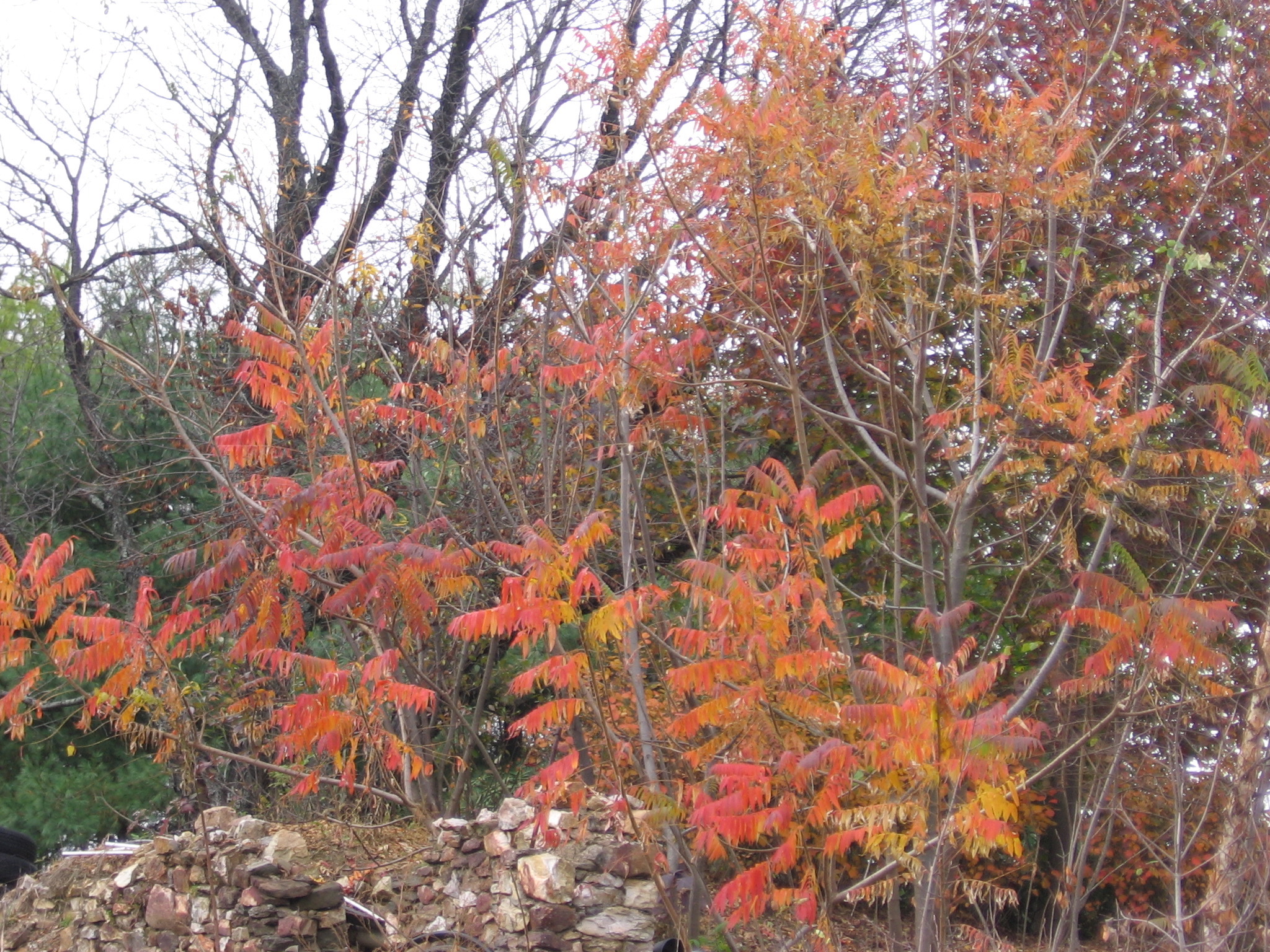
Back to top


